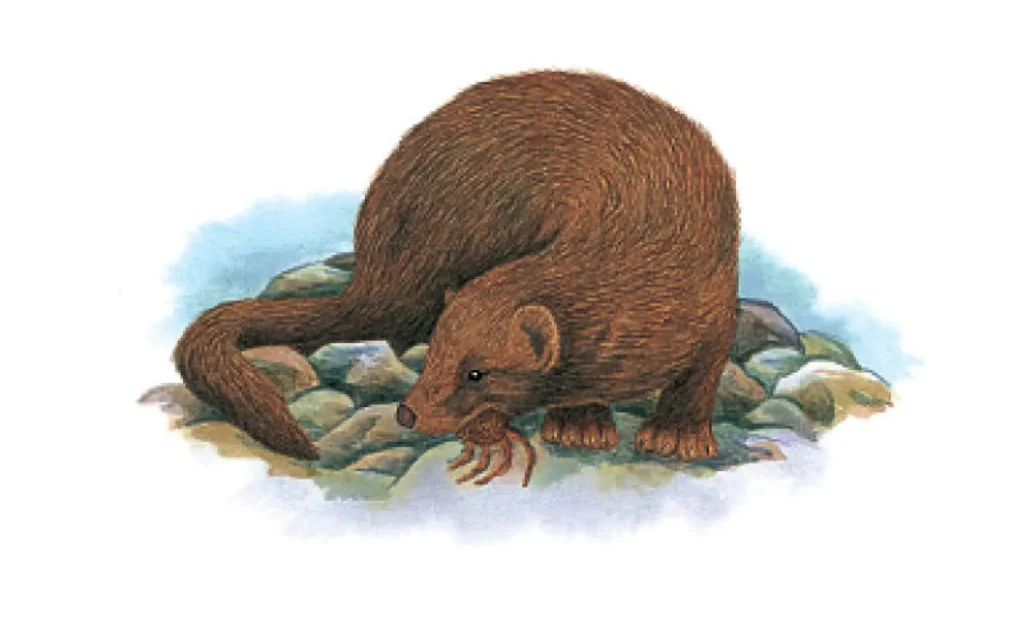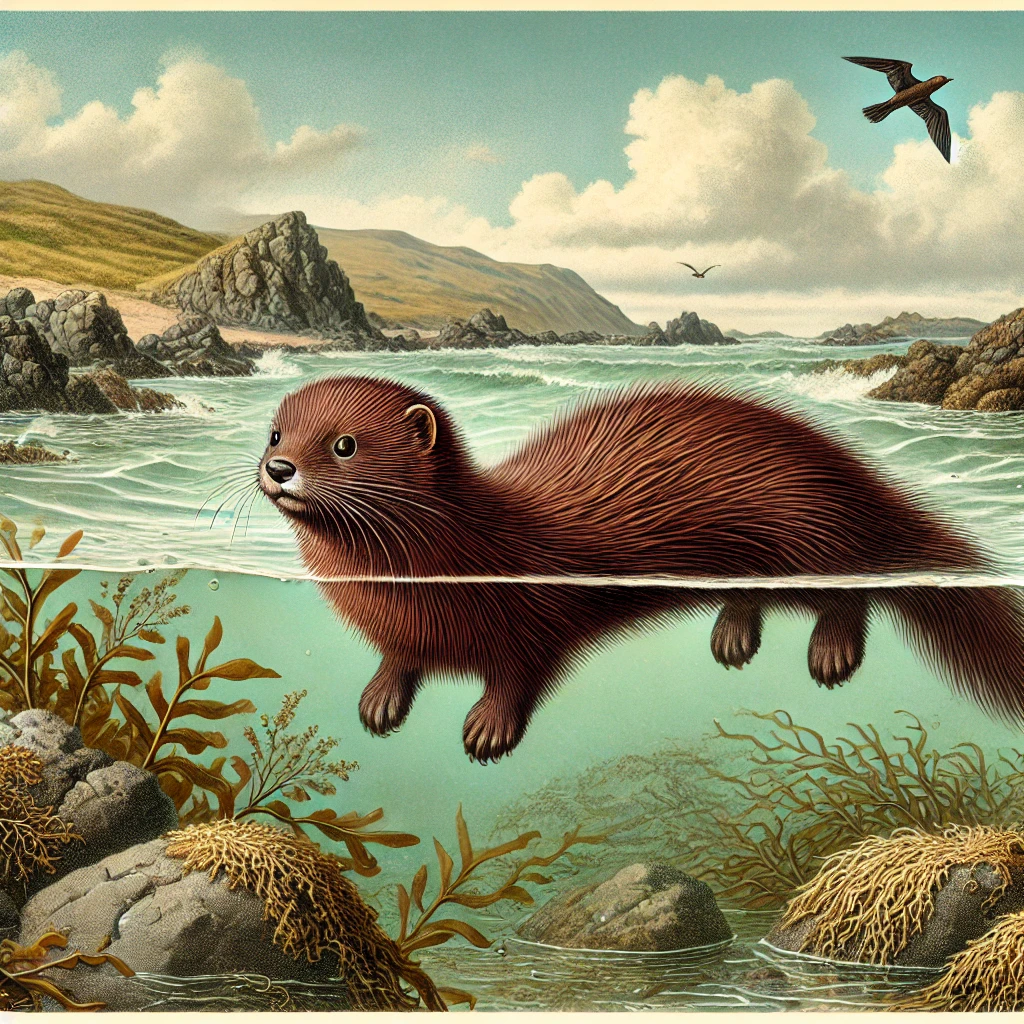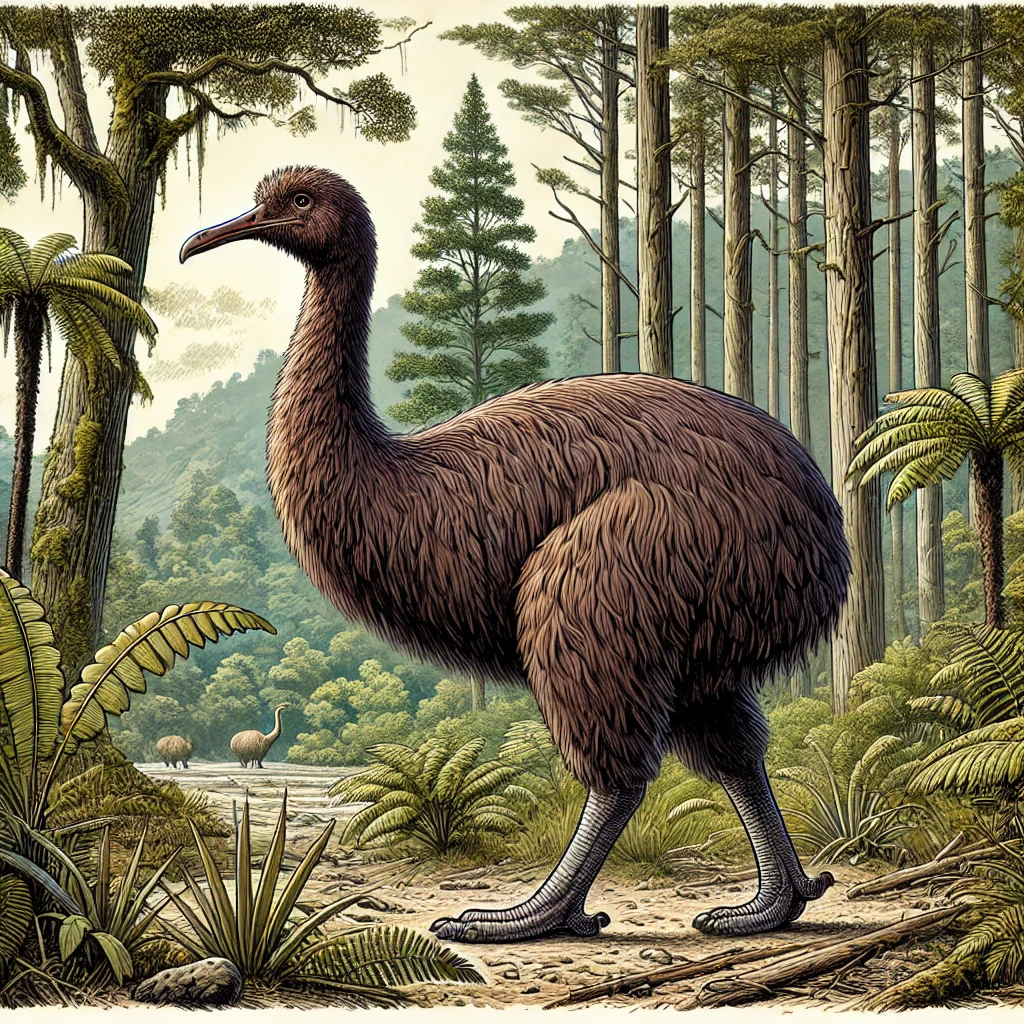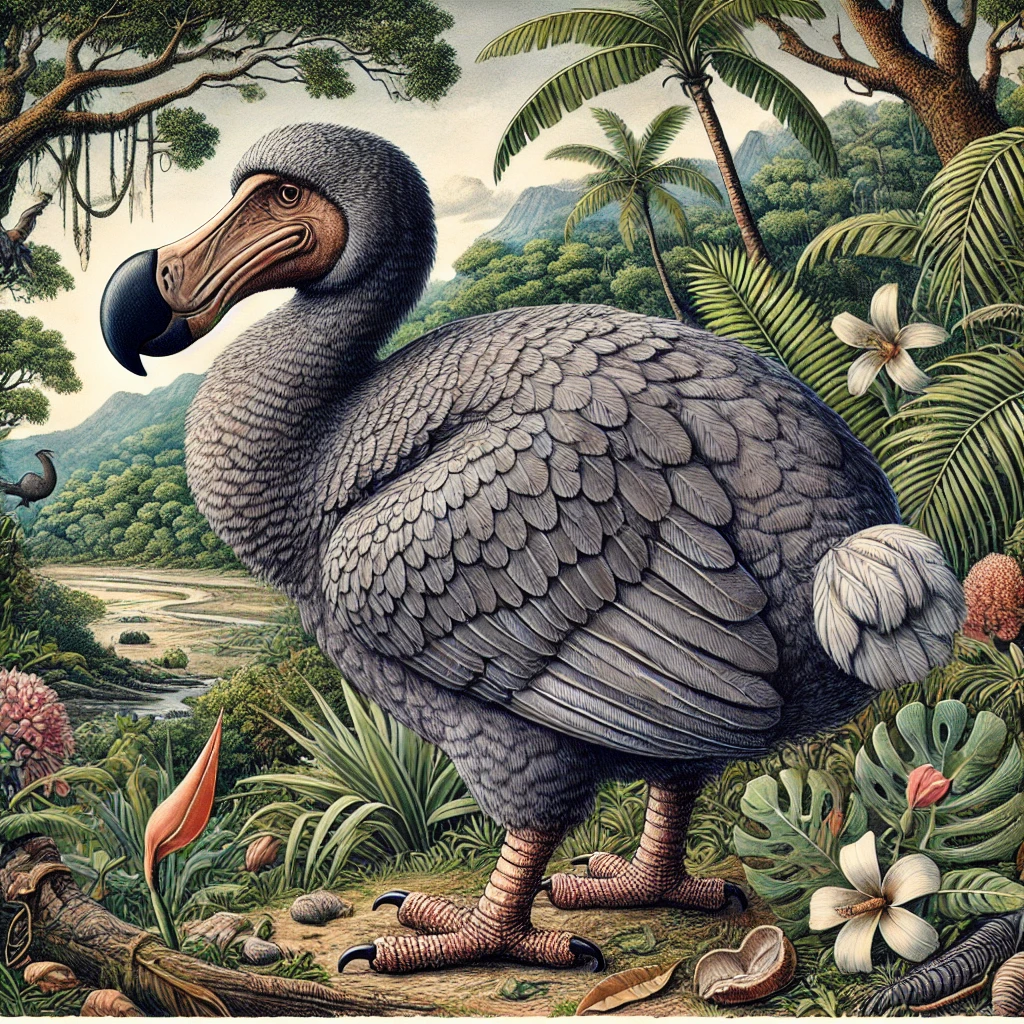Rediscovering the Sea Mink: An Extinct Coastal Hunter
Introduction:
The Sea Mink, scientifically known as Neogale macrodon, was a large, semi-aquatic mammal native to the coastal regions of northeastern North America. Known for its size and aquatic habits, the Sea Mink thrived along the rocky shores and islands of Maine and possibly parts of Canada. Its dense, reddish-brown fur made it a target for hunters, leading to its eventual extinction in the late 19th century. The Sea Mink’s disappearance highlights the impact of human activities on coastal ecosystems and the delicate balance required to maintain biodiversity.
Facts:
| Attribute | Details |
|---|---|
| Scientific Name | Neogale macrodon |
| Common Names | Sea Mink |
| Year Declared Extinct | Late 19th century |
| Kingdom | Animalia |
| Phylum | Chordata |
| Class | Mammalia |
| Order | Carnivora |
| Family | Mustelidae |
| Genus | Neogale |
| Species | N. macrodon |
| Natural History and Origin | Native to the coastal regions of northeastern North America |
| Physical Information | Large size for a mink, about 60-70 cm in length |
| Appearance | Dense reddish-brown fur, long body, webbed feet |
| Scientist Names | Described by naturalists in the 19th century |
| Region | Coastal Maine and possibly parts of Canada |
Appearance:
The Sea Mink was notably larger than its inland relatives, measuring about 60-70 cm (24-28 inches) in length. It had dense, reddish-brown fur that provided insulation against cold coastal waters. Its body was elongated, with webbed feet adapted for swimming. The Sea Mink’s robust build and semi-aquatic adaptations made it a proficient hunter in both terrestrial and marine environments.

Distribution:
Historically, the Sea Mink inhabited the rocky coastal regions and islands of Maine and possibly parts of southeastern Canada. These areas provided abundant food resources and suitable habitats for hunting and denning.

Habits and Lifestyle:
The Sea Mink was a solitary and territorial animal, primarily active during twilight and nighttime hours. It thrived in coastal environments, hunting a variety of prey, including fish, crustaceans, and seabirds. Its semi-aquatic nature allowed it to exploit both land and sea for food. The Sea Mink constructed dens in rocky crevices or burrows near the shoreline, where it could find protection and raise its young.
Physical Characteristics:
The Sea Mink’s most distinctive feature was its large size compared to other mink species. Its dense fur was well-suited for cold, wet environments, providing both warmth and buoyancy. The webbed feet of the Sea Mink facilitated efficient swimming, while its sharp teeth and claws were adapted for catching and processing a variety of prey.
Diet and Nutrition:
As a carnivore, the Sea Mink had a diverse diet that included fish, crustaceans, seabirds, and small mammals. Its ability to hunt both on land and in water allowed it to take advantage of seasonal and environmental changes in prey availability. The Sea Mink’s strong jaw and sharp teeth were well-adapted for catching and consuming a wide range of animals, making it an apex predator in its coastal habitat.
Behavior:
Sea Minks exhibited solitary behavior, with each individual maintaining its own territory. They were known to be aggressive when defending their territories from intruders. Communication between Sea Minks likely involved vocalizations, scent markings, and body language. During the breeding season, males and females would come together to mate, but otherwise, they led independent lives.
Cause of Extinction:
The extinction of the Sea Mink in the late 19th century was primarily due to overhunting. Its dense, valuable fur made it a target for fur traders, leading to intense hunting pressure. The Sea Mink’s coastal habitat made it particularly accessible to hunters, and by the late 1800s, the population had declined drastically. Habitat destruction and competition with other species may have also contributed to its extinction. Despite efforts to locate surviving individuals, the Sea Mink was declared extinct by the end of the 19th century.
FAQs:
| Question | Answer |
|---|---|
| What led to the extinction of the Sea Mink? | Overhunting for its fur and habitat destruction. |
| When did the Sea Mink go extinct? | The late 19th century. |
| What did the Sea Mink eat? | It fed on fish, crustaceans, seabirds, and small mammals. |
| Why is the Sea Mink significant? | The Sea Mink serves as an example of the impact of human exploitation on coastal species and the importance of sustainable hunting practices. |
| Are there efforts to study the Sea Mink? | Ongoing research aims to understand its ecology and the factors leading to its extinction, often through the study of related species and historical records. |
Keywords:
Sea Mink, Neogale macrodon, extinct mammal, coastal wildlife, human-induced extinction, overhunting impacts, semi-aquatic predators, natural history, species adaptation, environmental changes, conservation lessons, fur trade history, North Atlantic ecosystems, wildlife preservation.
Categories:
- Extinct Mammals
- Coastal Wildlife
- Conservation Efforts
- Human Impact on Nature

-
Sea Mink: The Lost Predator of the North Atlantic
Rediscovering the Sea Mink: An Extinct Coastal Hunter Introduction: The Sea Mink, scientifically known as Neogale macrodon, was a large,…
-
Moa: The Extinct Giants of New Zealand
Exploring the Moa: New Zealand’s Lost Giants Introduction: The Moa, belonging to the order Dinornithiformes, were a diverse group of…
-
Dodo: The Iconic Symbol of Extinction
Unraveling the Dodo: The Lost Bird of Mauritius Introduction: The Dodo, scientifically known as Raphus cucullatus, was a flightless bird…
Views: 10

